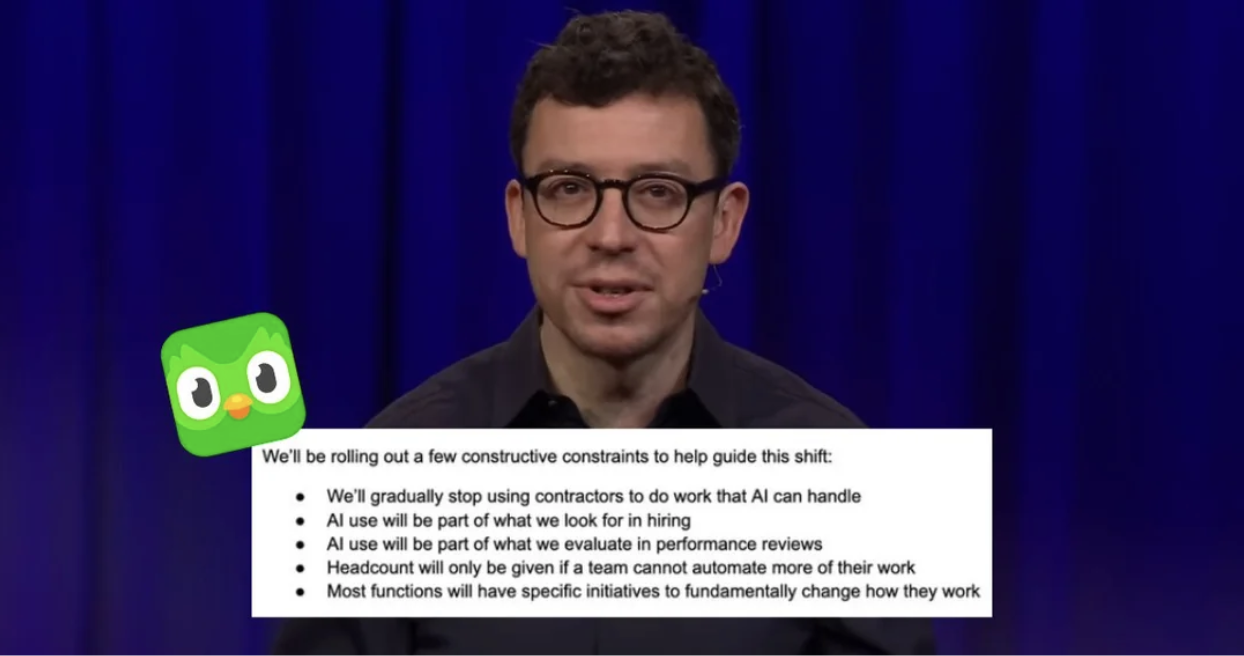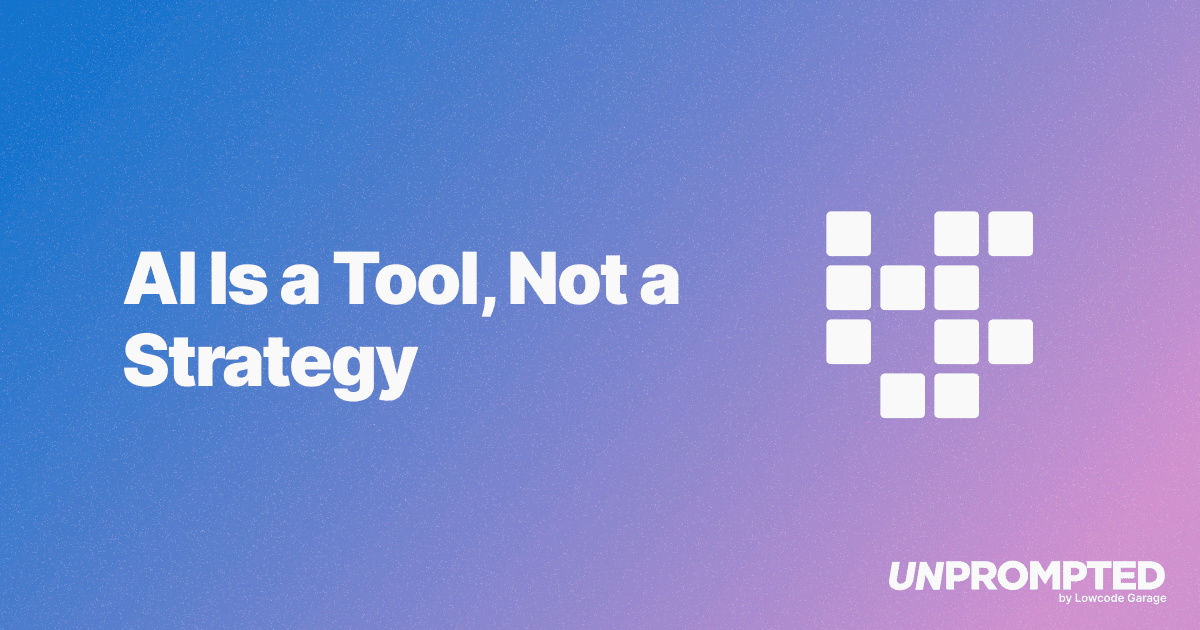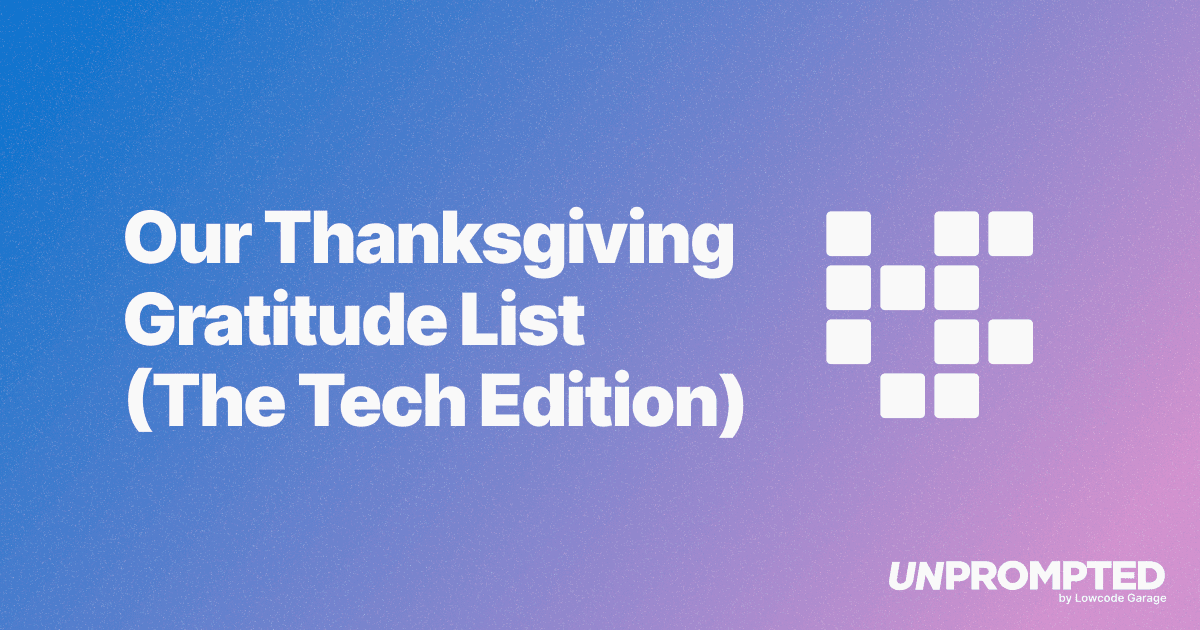Three Leaked CEO Memos on AI
Category killers are making it clear that AI isn't a feature—it's a requirement.
Three major tech CEOs—Tobias Lütke (Shopify), Luis von Ahn (Duolingo), and Micha Kaufman (Fiverr)—recently issued internal memos that weren't about product updates. They were about massive shifts in how they think about running their businesses. In other words: see if AI can do it first.
Let's dig in.

What It Means for Their Businesses
Shopify
Tobias Lütke's leaked memo was blunt: using AI isn't optional—it's now part of how Shopify operates. Every employee is expected to integrate AI into their workflows, and AI proficiency is a baseline expectation. Before asking for more staff or resources, they must explain why AI can't help.
"Stagnation is a slow-motion failure. If you're not climbing, you're sliding." – Tobias Lütke
This mindset is being baked into performance reviews, product development, and company culture. Shopify isn't just adopting AI—it's institutionalizing it.
Duolingo
Luis von Ahn shared a staggering stat: the company launched more courses in the past year than in the previous 12 combined—thanks to generative AI. AI won't just be a feature of Duolingo's product, it will power every part of it—using this technology to redefine what scale looks like in education.
"Developing our first 100 courses took about 12 years, and now, in about a year, we're able to create and launch nearly 150." – Luis von Ahn
Fiverr
Freelance marketplace CEO Micha Kaufman's internal email shared a very harsh truth. He told employees that AI is coming for everyone—developers, lawyers, designers, salespeople—and that their only shot at staying in the game is to become exceptional with AI.
"If you don't become exceptional at what you do, with AI, you'll need a career change in months."
Kaufman even listed tools by role (Cursor for coders, Legora for lawyers) and warned: "Your value will decrease before you know what hit you" if you don't adapt.
Side note: Here at Lowcode Garage, Cursor is one of our most used and favorite AI tools.
The AI-First Way
Let's unpack what this AI-first approach could actually mean at one of these companies.
Take Duolingo. Let's say they want to test a new French lesson plan. To gauge interest, they decide to launch a quick demo video ad.
Typically this would involve the following team:
- Product manager to oversee the entire project
- Course creator to write the new lesson content
- UX designer to create the screens
- Video editor to turn it into a prototype
- Marketing manager to coordinate the asset and launch
- Plus, the usual parade of stakeholders for approval
Now, let's run this with some (conservative) math assuming a five person team earning an average of $150K/year works on this during a two-week sprint.
That would come out to $5,760 per person, or a whopping $28,800 to launch a single test.
And that's for one ad experiment—not a full product launch. Just validating whether a new French lesson is worth pursuing.
That's assuming the team works fast and wraps it all in two weeks. Realistically, it would probably take longer.
Now let's see what an AI-first approach could look like: One person—say, a product lead making $150K/year—uses an AI tool like Cursor or Bolt:
- They create a 3 sentence prompt describing the French lesson product
- The AI tool builds a fully functional prototype of the lesson in minutes
- They turn the prototype into a video with a screen recording and share it with the world
Let's assume this process takes 4 hours total. That ends up equalling $288, for the same output 🤯
And the AI tools? Most cost under $20/month.
If you don't believe this is possible, check out this creator who made a Duolingo dupe (not just a lesson plan, the full app) in just a few minutes: https://www.tiktok.com/@yoniman.mp4/video/7482930657300204843?_r=1&_t=ZT-8wBYNmiaL63.
The 100x Impact
When you compare the two outcomes, the results are staggering:
- From $28,800 to $288 → that's 100x cheaper
- From 400 hours of collective team effort to 4 hours solo → 100x faster
- And importantly, now this test isn't a major initiative—it's just another Tuesday experiment
Multiply this across a dozen ideas a month. Then across the entire company. The time and cost savings don't just add up—they compound.
(Book a call with us if you want to double check our math 😉)
Food for Thought
When the Industrial Revolution transformed society from 90% agrarian to urban and mechanized, the world changed in profound ways.
Yes – the world will face major existential risks with AI. But imagine how much productivity, how much progress, and how much good it can do.
You now have the ability to do orders of magnitude more than what you previously could. That sounds like a generational opportunity to us.
Frequently Asked Questions
Continue Reading

AI Is a Tool, Not a Strategy
Henry Kravis reminds us that AI is a productivity tool, not a strategy. Strong management, cultural fit, and operational fundamentals still determine whether businesses succeed or fail.

Four AI Conversation Starters (To Avoid Holiday Small Talk)
Four timely AI conversation starters covering federal vs state AI regulation, Opus 4.5 capabilities, physical AI in construction, and Michael Burry's bet against Nvidia—perfect for surviving holiday small talk.

Our Thanksgiving Gratitude List (The Tech Edition)
Discover the AI tools transforming how we build products at Lowcode Garage. From publishing content with Claude Desktop to building prototypes in weeks instead of quarters, here's our Thanksgiving gratitude list for the tech that makes it all possible.